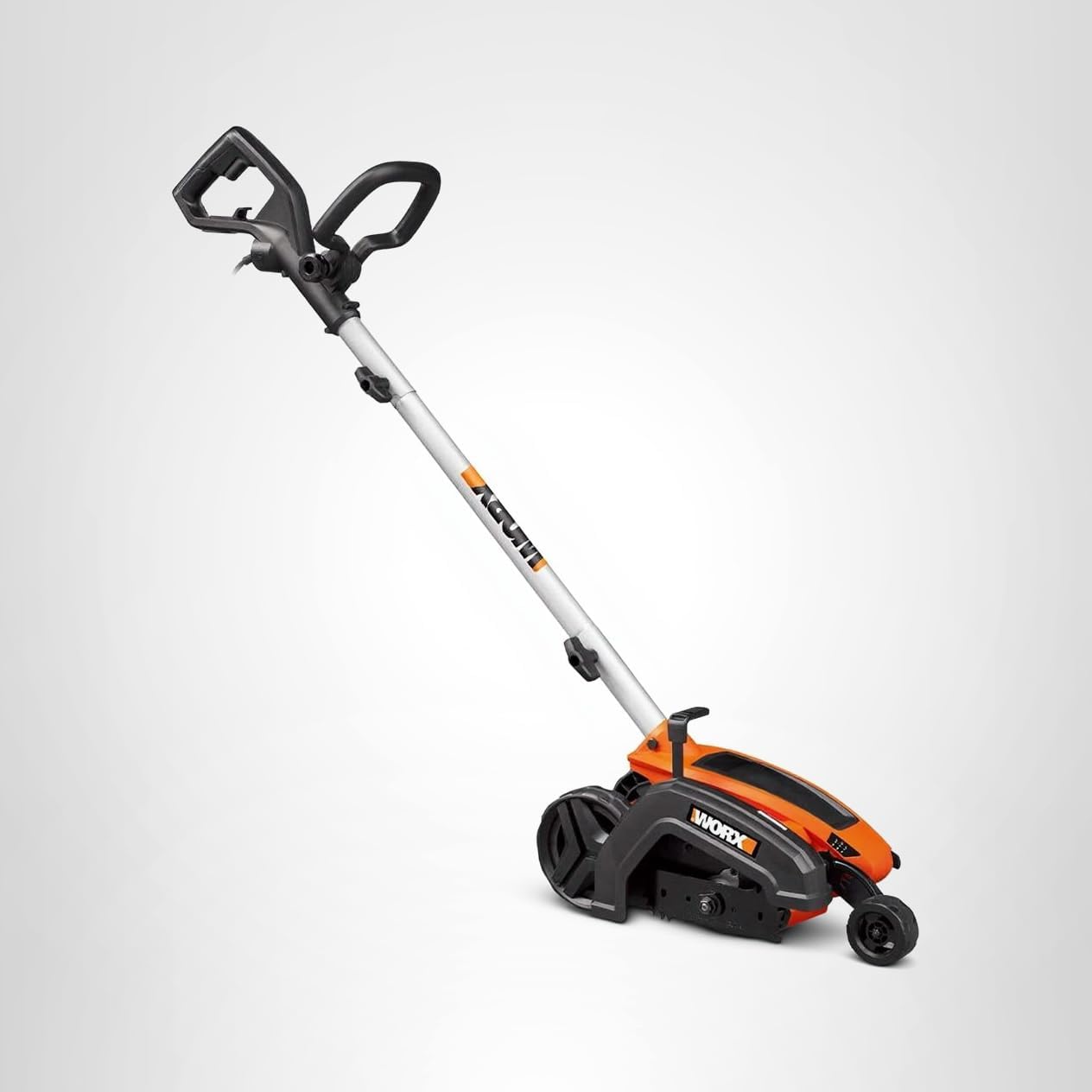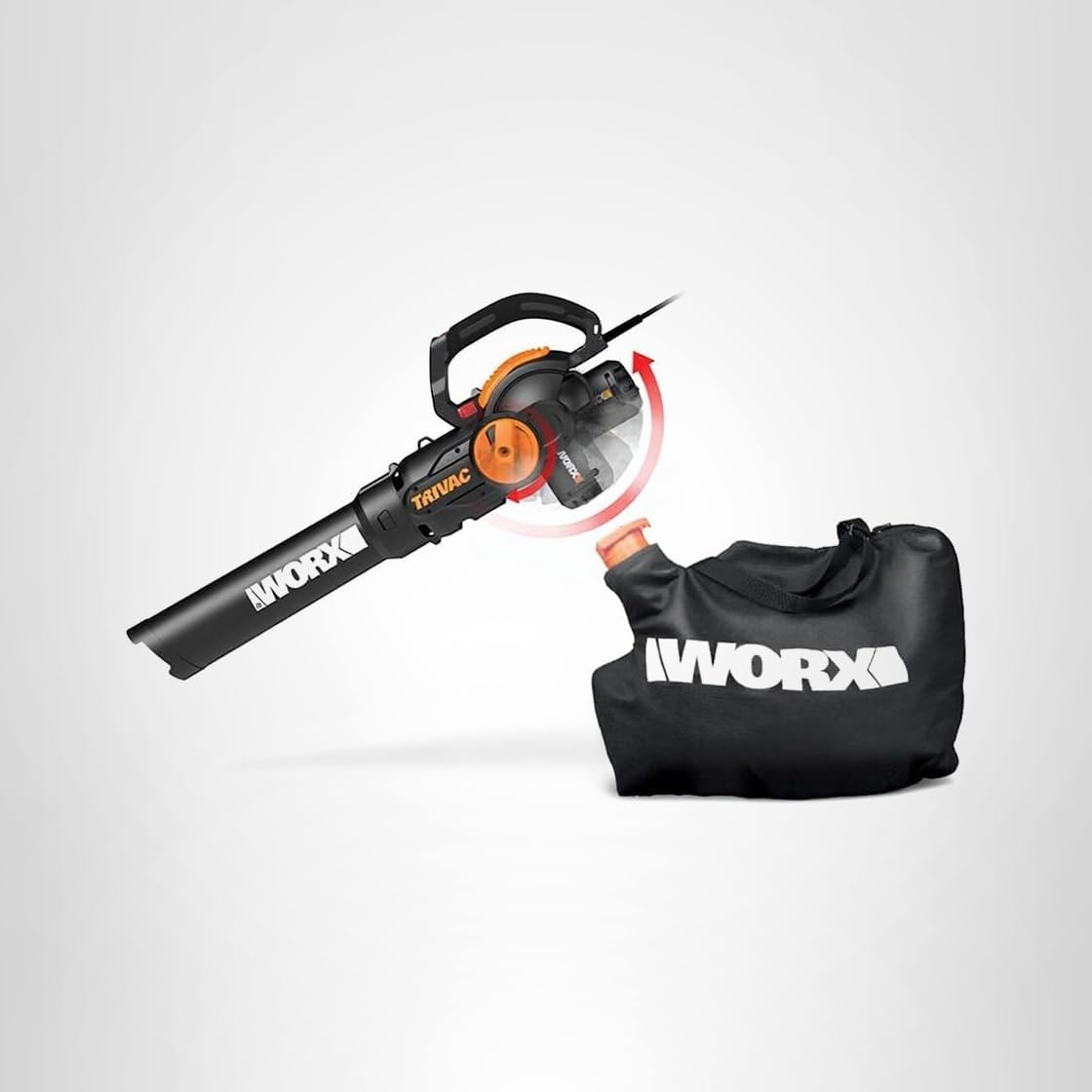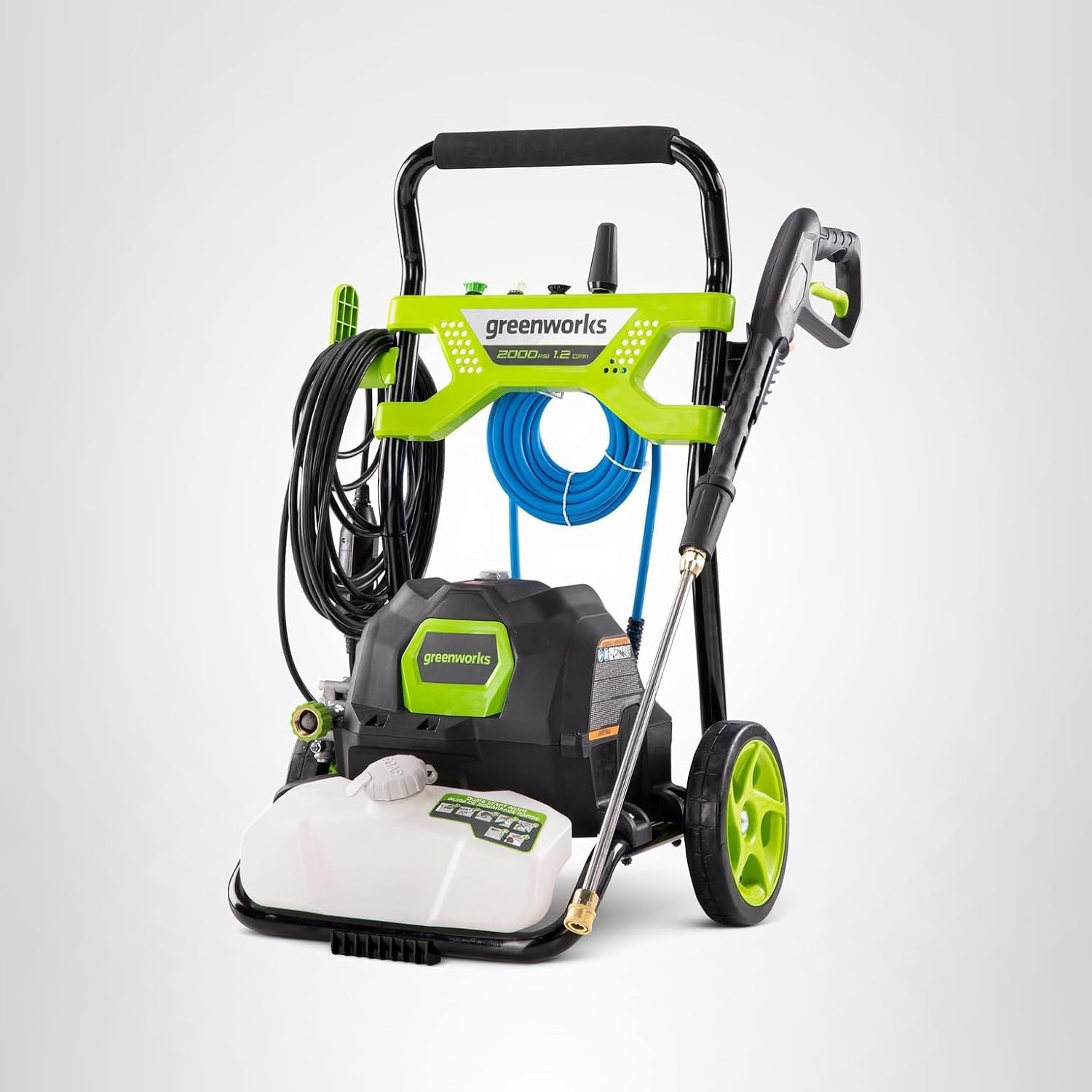THE 7 BEST LAWN SPRINKLERS OF 2025: A COMPLETE BUYER’S GUIDE
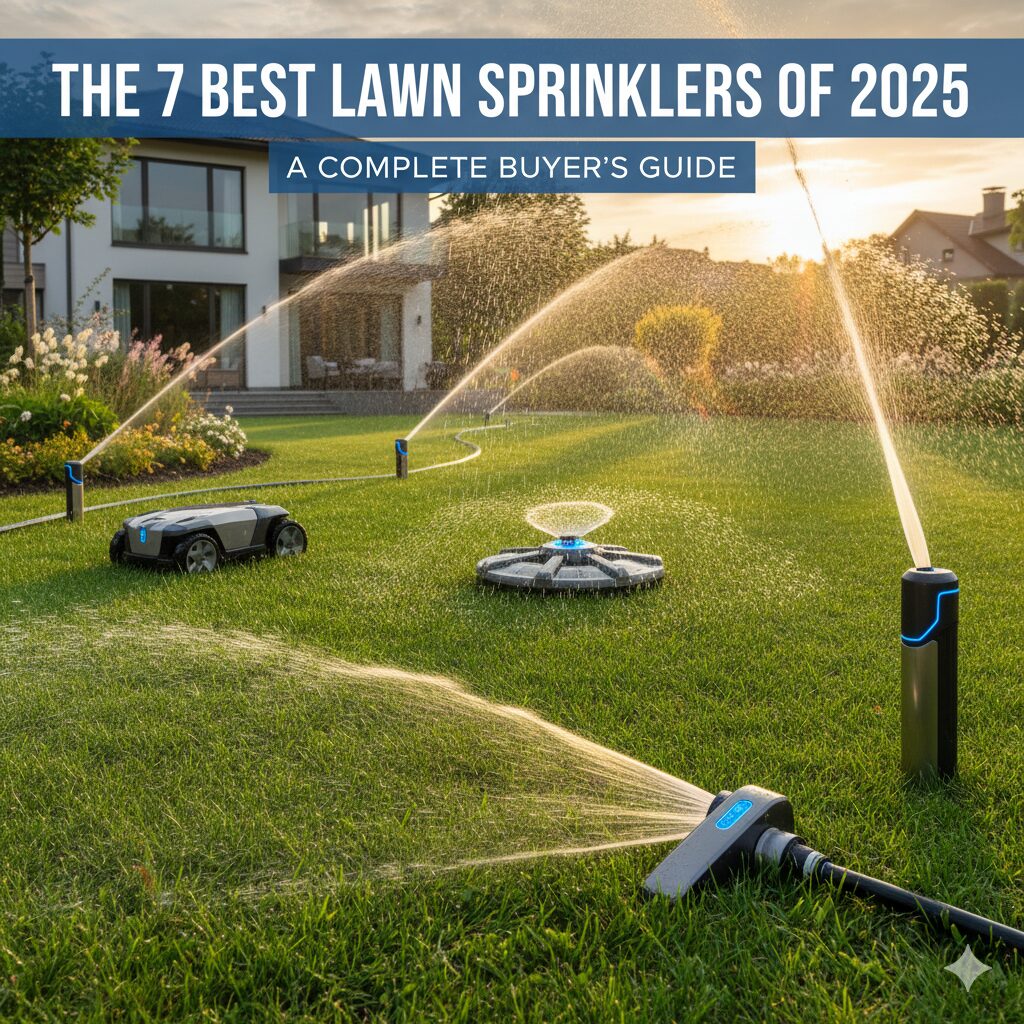
Proper hydration is the secret to a resilient, beautiful lawn.
A lush, green lawn is the heart of a beautiful property, but its lifeblood is water. You can have the best soil, the most powerful mower, and the perfect fertilizer, but without consistent, proper hydration, your dream lawn will remain just that—a dream. The lawn sprinkler is the unsung hero of the American yard, the tool responsible for the critical task of delivering water efficiently and effectively. But not all sprinklers are created equal.
Choosing the wrong sprinkler leads to frustrating problems: dry, brown patches in one corner and swampy puddles in another. It means wasting precious water on your driveway and sidewalk. It means spending hours moving a sprinkler around, only to get uneven results. The market is flooded with options—oscillating, impact, rotating, traveling—and picking the right one for your specific lawn size, shape, and water pressure can feel like a daunting task.
This is your ultimate resource for mastering lawn hydration. We’re going to dive deep into the science of watering, break down the different types of sprinkler technology, and provide in-depth reviews of the 7 best lawn sprinklers for every yard and budget. This guide will empower you to choose with confidence and use your new tool like a pro. For a complete overview of how watering fits into a larger strategy, make sure to read our foundational Lawn Care 101 guide.
THE ART OF HYDRATION: A SPRINKLER TECHNOLOGY DEEP DIVE
Before we get to the products, it’s crucial to understand what you’re trying to achieve. The goal is not just to get the grass wet; it’s to water deeply and infrequently. This encourages your grass to grow deep, strong roots, making it more resilient to drought and heat. The rule of thumb for most U.S. lawns is to receive about 1 to 1.5 inches of water per week, either from rainfall or your sprinkler.
THE MAJOR TYPES OF LAWN SPRINKLERS
Your lawn’s size and shape are the most important factors in determining which sprinkler type is right for you.
- Oscillating Sprinklers: These are the familiar fan-style sprinklers that spray water back and forth in a rectangular pattern. With adjustable width and range controls, modern oscillating sprinklers are perfect for small, medium, and large yards that are primarily square or rectangular.
- Impact Sprinklers: Known for their distinctive “tick-tick-tick” sound, these powerful sprinklers shoot a single, strong jet of water in a circular or partial-circle pattern. They are exceptionally durable and can cover massive areas, making them ideal for extra-large, open lawns.
- Rotating (or Rotary) Sprinklers: These sprinklers feature multiple arms or a spinning head that distributes several streams of water in a circular pattern. They often apply water more slowly and gently than impact sprinklers, which is excellent for minimizing runoff and improving absorption, especially on sloped yards or with dense clay soil.
- Traveling Sprinklers: These are essentially little water-powered tractors. You lay your hose in the path you want watered, and the sprinkler follows it, dragging the hose behind it. They are a fantastic solution for very large or irregularly shaped lawns where a stationary sprinkler just won’t cut it.
KEY FACTORS TO CONSIDER BEFORE YOU BUY
- Lawn Size & Shape: Measure your lawn to get a rough square footage. A small, square lawn has very different needs than a large, pie-shaped one.
- Water Pressure (PSI): Your home’s water pressure determines how far a sprinkler can throw water. If you have low PSI, a powerful impact sprinkler might not perform well. Most sprinklers are designed for the 40-60 PSI common in U.S. homes.
- Durability: Sprinklers with metal components (brass, zinc) will almost always outlast their all-plastic counterparts, especially if they are going to be left out in the sun.
THE 7 BEST LAWN SPRINKLERS FOR 2025
After extensive research and analysis of user feedback, we’ve selected the top-performing sprinklers that deliver on coverage, durability, and value.
1. MELNOR XT TURBO OSCILLATING SPRINKLER
Best Overall Oscillating Sprinkler
WHY IT MADE THE LIST
The Melnor XT Turbo is the evolution of the classic oscillating sprinkler. It’s a master of adjustability, featuring twin-touch controls that allow you to set both the width and range of the watering pattern. This means you can easily water a wide front lawn or a narrow side yard without wasting a drop on the pavement. The 20 precision nozzles provide even coverage, and the turbo-drive motor ensures a smooth, long-lasting operation. For the typical American rectangular lawn, this sprinkler offers the perfect blend of performance, control, and value.
- Type: Oscillating
- Coverage: Up to 4,500 sq. ft.
- Material: Plastic & Aluminum
- Adjustability: Range, Width
PROS
- Highly adjustable width and range
- Smooth and quiet turbo motor
- Provides even, rectangular coverage
- Great value for the price
CONS
- Plastic construction is less durable than metal
- Can be lightweight in high winds
PRO USER TIP
Take a few minutes to fine-tune the width and range tabs before you walk away. A perfect setup will create a clear “wall” of water that stops right at the edge of your lawn, maximizing efficiency.
2. ORBIT BRASS IMPACT SPRINKLER ON TRIPOD
Maximum Coverage & Durability
WHY IT MADE THE LIST
When you need to water a massive area, accept no substitutes. The Orbit Brass Impact Sprinkler is a powerhouse. The all-brass head is incredibly durable, and the impact mechanism can throw a stream of water up to 50 feet, covering a circle nearly 100 feet in diameter (up to 7,800 sq. ft.). Mounting it on a heavy-duty tripod allows you to get the sprinkler above shrubs or other obstacles for unimpeded coverage. The tripod is adjustable in height and has weighted legs for stability. You can set it to water a full 360-degree circle or adjust the collars for any partial arc.
- Type: Impact on Tripod
- Coverage: Up to 7,800 sq. ft.
- Material: Brass Head, Metal Tripod
- Adjustability: Full/Part Circle, Deflector Shield, Diffuser Pin
PROS
- Incredible range for very large lawns
- Extremely durable brass and metal construction
- Tripod provides stability and height
- Fully adjustable watering pattern
CONS
- Requires good water pressure to achieve max range
- Can be loud (the classic “tick-tick” sound)
3. DRAMM COLORSTORM TURRET SPRINKLER
Small or Irregularly Shaped Areas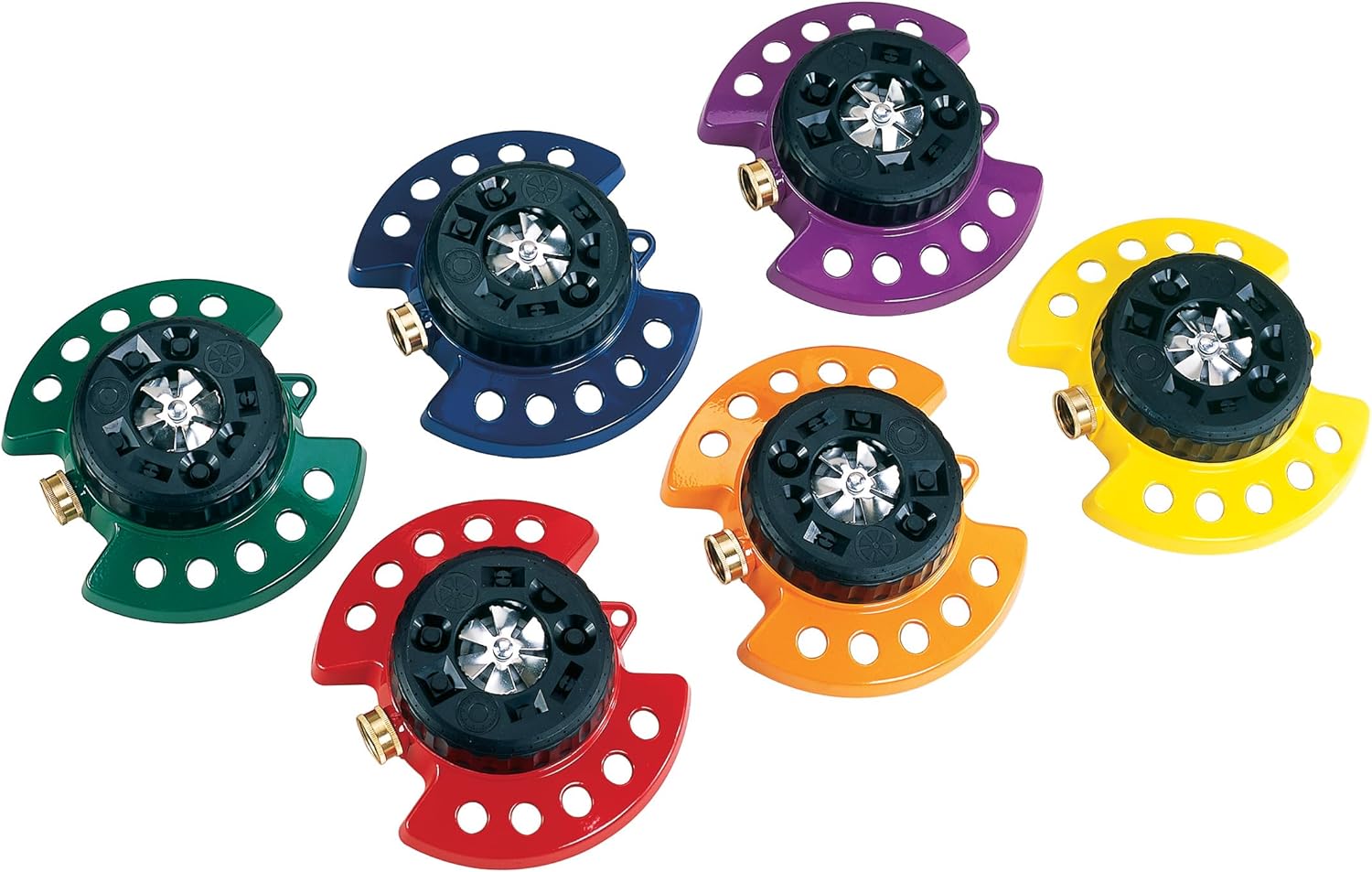
WHY IT MADE THE LIST
Not every lawn is a giant rectangle. For small yards, garden beds, or oddly shaped patches of grass, the Dramm Turret Sprinkler is a versatile problem-solver. It features nine different spray patterns, selectable by simply twisting the dial—from a small square to a narrow rectangle, a half-circle, and more. This allows you to precisely match the water output to the exact shape of the area you need to water, virtually eliminating overthrow and water waste. Its heavy-duty metal base keeps it planted, and its vibrant color options add a bit of fun to your lawn care arsenal.
- Type: Stationary Turret
- Coverage: Varies by pattern
- Material: Metal Base, Plastic Head
- Adjustability: 9 Selectable Patterns
PROS
- 9 patterns for ultimate versatility
- Perfect for small or weirdly shaped lawns
- Heavy metal base for stability
- Durable construction and fun colors
CONS
- Not suitable for large lawn coverage
- Must be moved to water different sections
4. ORBIT 58322 TRAVELING SPRINKLER
Extra-Large or Unconventional Lawns
WHY IT MADE THE LIST
Affectionately known as the “tractor sprinkler,” this clever device is a set-it-and-forget-it solution for huge properties. You lay out your garden hose (up to 200 feet) in the pattern you want watered, and this cast-iron sprinkler uses the water pressure to power itself along the hose path. Its rotary arms can spray up to 50 feet in diameter, covering a massive area in a single run. It has three speed settings (high, low, and neutral) to control the saturation level. For homeowners with acres to water, this is a far more convenient and affordable option than installing a full in-ground system.
- Type: Traveling Rotary
- Coverage: Up to 13,500 sq. ft.
- Material: Cast Iron Body
- Adjustability: 3 Speeds, Adjustable Spray Arms
PROS
- Waters a huge area automatically
- Follows any hose path you create
- Durable, heavy cast-iron body
- 3 speed settings for water application control
CONS
- Requires a long hose
- Can get stuck on very hilly or bumpy terrain
5. GARDENA ZOOMMAXX OSCILLATING SPRINKLER
Precision and Water Conservation
WHY IT MADE THE LIST
The Gardena ZoomMaxx combines the gentle application of a rotary sprinkler with the precise rectangular pattern of an oscillator. This German-engineered sprinkler is designed for ultimate control. You can adjust the length, the width, and even the water flow right on the unit. This level of precision allows you to water a tiny patch of new seed or a long, narrow stretch of lawn with almost no overspray. The weighted sled base keeps it stable, and it’s a fantastic choice for homeowners who are focused on water conservation and pinpoint accuracy.
- Type: Oscillating / Rotary Hybrid
- Coverage: Up to 2,300 sq. ft.
- Material: High-Impact Plastic
- Adjustability: Length, Width, Water Flow
PROS
- Exceptional precision and control
- Minimizes water waste
- Stable weighted sled base
- Quiet operation
CONS
- Lower maximum coverage than others
- Premium price point
6. AQUA JOE SJI-OMS16 INDESTRUCTIBLE OSCILLATING SPRINKLER
Extreme Durability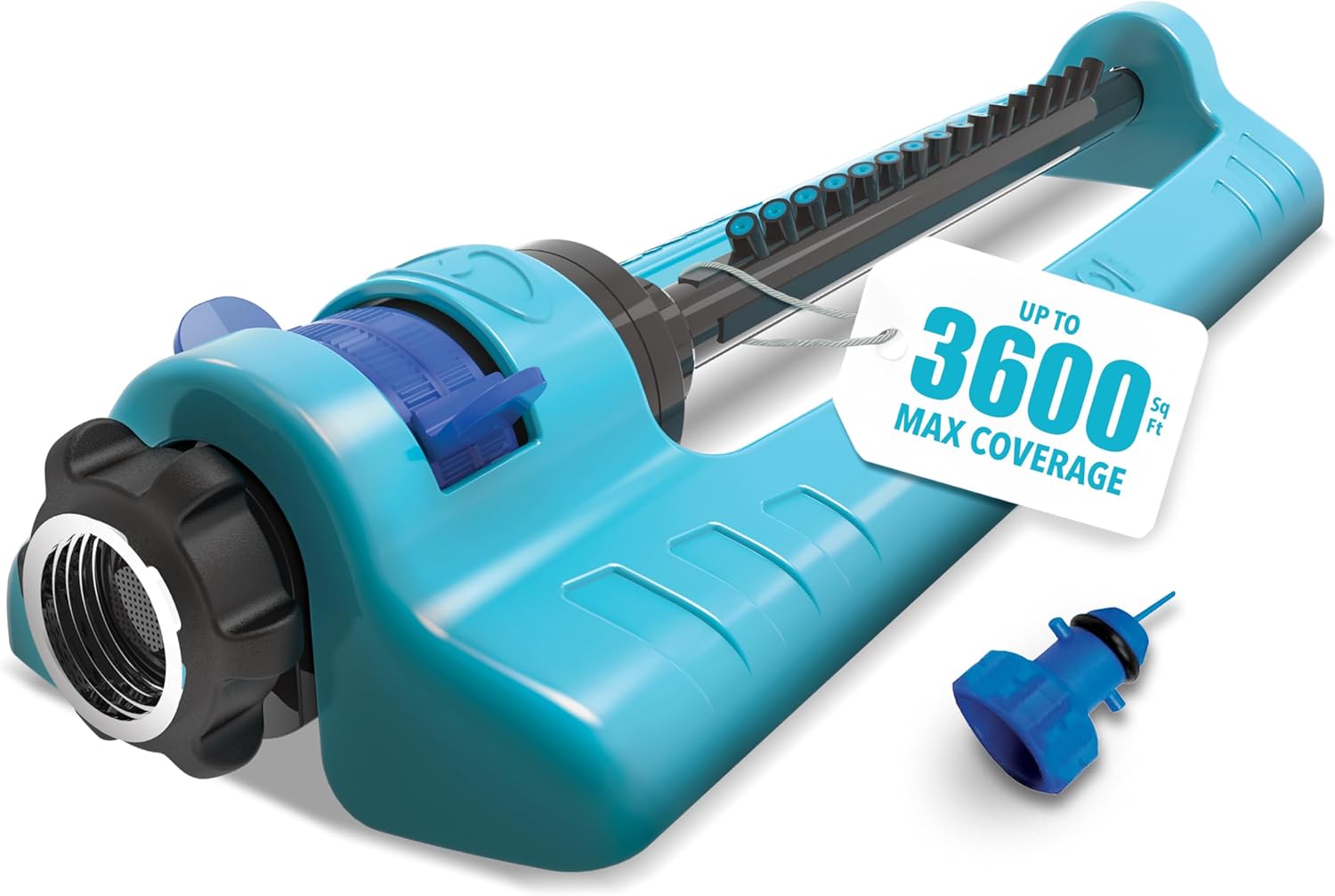
WHY IT MADE THE LIST
If you’re tired of plastic sprinklers cracking after a season or two in the sun, the Aqua Joe is your answer. It’s built like a tank, featuring a solid metal base that prevents tipping and all-metal connections and zoom control. The 16 clog-resistant nozzles provide coverage up to 3,600 sq. ft., and the range and width are fully adjustable. This sprinkler is designed for homeowners who value a “buy it for life” mentality and want a tool that can withstand being dragged around the yard and baked in the summer sun without failing.
- Type: Oscillating
- Coverage: Up to 3,600 sq. ft.
- Material: All Metal
- Adjustability: Range, Width
PROS
- Heavy-duty, all-metal construction
- Resistant to tipping, cracking, and sun damage
- Clog-resistant nozzles
- Excellent long-term value
CONS
- Heavier to move around the lawn
- Metal can get hot in direct sun
7. RACHIO 3 SMART SPRINKLER CONTROLLER
The Ultimate Smart Upgrade (For In-Ground Systems)
WHY IT MADE THE LIST
This pick is different. It’s not a hose-end sprinkler, but for homeowners with in-ground systems, the Rachio 3 is the single best upgrade you can make. This smart controller replaces your old, confusing timer box and gives you complete control from your smartphone. But its real power is in automation. It uses local weather data to automatically skip watering when it rains, and it adjusts watering times based on the season, soil type, and even the amount of sun a specific zone gets. It can save homeowners up to 50% on their outdoor water usage. It’s the brain that makes your entire irrigation system work smarter, not harder.
- Type: Smart Controller (for in-ground systems)
- Coverage: Up to 16 Zones
- Material: Plastic Casing
- Adjustability: Infinite (via App)
PROS
- Saves a significant amount of water and money
- Automates watering based on real-time weather
- Control your entire system from your phone
- Easy to install and set up
CONS
- Only works with in-ground irrigation systems
- Requires a Wi-Fi connection
MASTERING YOUR WATERING STRATEGY
Having the best sprinkler is only half the battle. Using it effectively is what creates a truly healthy lawn.
THE TUNA CAN TEST: THE SECRET TO PERFECT WATERING
Want to know exactly how long to run your sprinkler? Grab a few empty tuna cans (or any straight-sided container) and place them around your lawn in the sprinkler’s path. Turn on the sprinkler and time how long it takes for the cans to collect one inch of water. That’s your magic number. Now you know precisely how long to run that zone to deliver the perfect amount of water.
WHEN AND HOW TO WATER
The best time to water your lawn is in the early morning, between 4 AM and 10 AM. Watering at this time minimizes evaporation from the sun and wind, and it allows the grass blades to dry before nightfall, which helps prevent fungal diseases. Avoid watering in the evening if possible.
Proper watering is also critical after applying lawn treatments. After you’ve completed your seasonal lawn fertilizing with the best lawn fertilizer, watering it in is what activates the granules and delivers the nutrients to the roots. The same is true for many granular lawn pest control products and some types of lawn weed killer. Your sprinkler is the tool that ensures these products work effectively.
THE COMPLETE LAWN ECOSYSTEM
A great watering strategy is a key part of an interconnected system of care. For a truly pristine lawn, every element needs to work together.
- Mowing & Edging: A well-maintained lawn absorbs water more effectively. Keep your lines sharp with the best lawn edgers and maintain a consistent height with one of the best lawn trimmers of 2025. For the ultimate in automation, the best robotic lawn mowers maintain a perfect cut constantly.
- Cleanup: After mowing, use one of the best lawn blowers to clear clippings from paths and the lawn surface, which prevents thatch and helps water penetrate the soil.
- The Right Tools for the Job: Having the right equipment makes everything easier. Ensure your shed is stocked with the best lawn tools of 2025 for a successful season.
FREQUENTLY ASKED QUESTIONS (FAQ)
HOW LONG SHOULD I WATER MY LAWN WITH A SPRINKLER?
The goal is to deliver 1 to 1.5 inches of water per week. The exact runtime depends entirely on your sprinkler’s output and your water pressure. The best way to know for sure is to perform the “Tuna Can Test” described above. It might take 30 minutes for a high-output sprinkler or several hours for a low-flow rotary one.
IS IT BETTER TO WATER EVERY DAY OR A FEW TIMES A WEEK?
It is much better to water deeply 2-3 times per week than to water shallowly every day. Deep, infrequent watering encourages the grass to grow deep roots, making it stronger and more drought-resistant. Daily light watering leads to a shallow, weak root system.
WHAT IS THE BEST TYPE OF SPRINKLER FOR LOW WATER PRESSURE?
For homes with low water pressure (below 40 PSI), oscillating and rotary sprinklers generally perform better than powerful impact sprinklers. Look for models that are specifically designed for low-flow applications, as they will provide a more even and consistent spray pattern.
CONCLUSION: YOUR PARTNER IN PERFECT HYDRATION
Your lawn sprinkler is more than just a tool to get the grass wet—it’s a precision instrument for building a healthy, resilient, and beautiful yard. By understanding the needs of your lawn and matching them with the right technology—whether it’s an ultra-adjustable oscillator, a powerful impact head, or a clever traveling tractor—you take control of your lawn’s most vital resource. A smart watering strategy will save you time, conserve water, and serve as the foundation for all your other lawn care efforts, helping you achieve that perfect green carpet you’ve always wanted.






